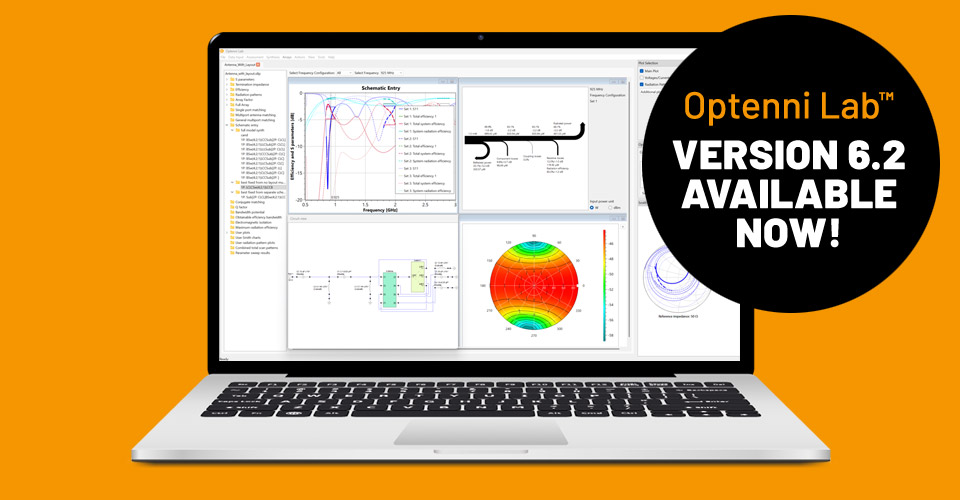RF Front end design
While Optenni Lab is mostly used in conjunction with antenna design, Optenni Lab can also help in the design and optimization of various components in the RF chain.
Simultaneous input and output matching of components
Some RF components, such as filters or linear amplifiers might not be ideally matched. Optenni Lab can easily design input and output matching circuits which maximize the power transfer and gain over the component. For filter matching, it is easy to add stop band criteria for controlling the filter attenuation characteristics
Matching of low noise amplifiers
In receiver chains, the low noise amplifiers (LNAs) are typically matched so that the input matching circuit obtains good noise performance and then the output matching circuit obtains good gain. If you know the optimal LNA input impedance in terms of the noise figure, Optenni Lab can easily design matching circuits which present the desired input impedance to the amplifier.
Output matching of power amplifiers
The operation of modern power amplifiers is highly dependent on the design of the output matching networks. The output power, efficiency and linearity of the amplifier depends on the impedance seen by the amplifier and the fundamental frequency and also at some of the harmonic frequencies. If you know the optimal impedance values, Optenni Lab can easily synthesize matching circuits which present these impedances to the amplifier.
Optimization of carrier aggregation setups
Many wireless devices increase the wireless data rates by communicating on multiple frequency bands simultaneously, using a technique known as carrier aggregation. The design of such radio systems is getting increasingly complex as the different receiver branches cannot be optimized independently of each other. The filtering, noise and amplification characteristics must be optimized simultaneously as the branches are loading each other.
Optenni Lab supports the design of carrier aggregation setups in multiple ways. First, the optimization goals for the various operation scenarios can be easily entered by using Optenni Lab’s concept of frequency configuration – it is a collection of optimization targets and frequency ranges related to a particular carrier aggregation scenario and thus a state of an RF switch. Second, Optenni Lab’s synthesis capabilities can rapidly scan through the various component types and matching topologies which are used in the receive chanins.



Need more information?
Please contact us and we will help you soon.


